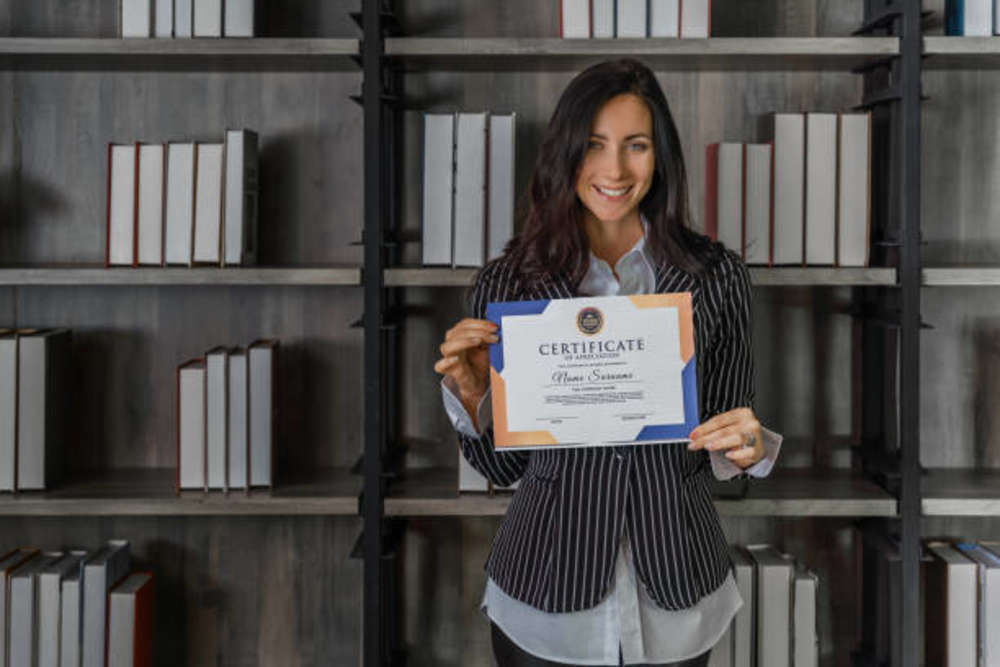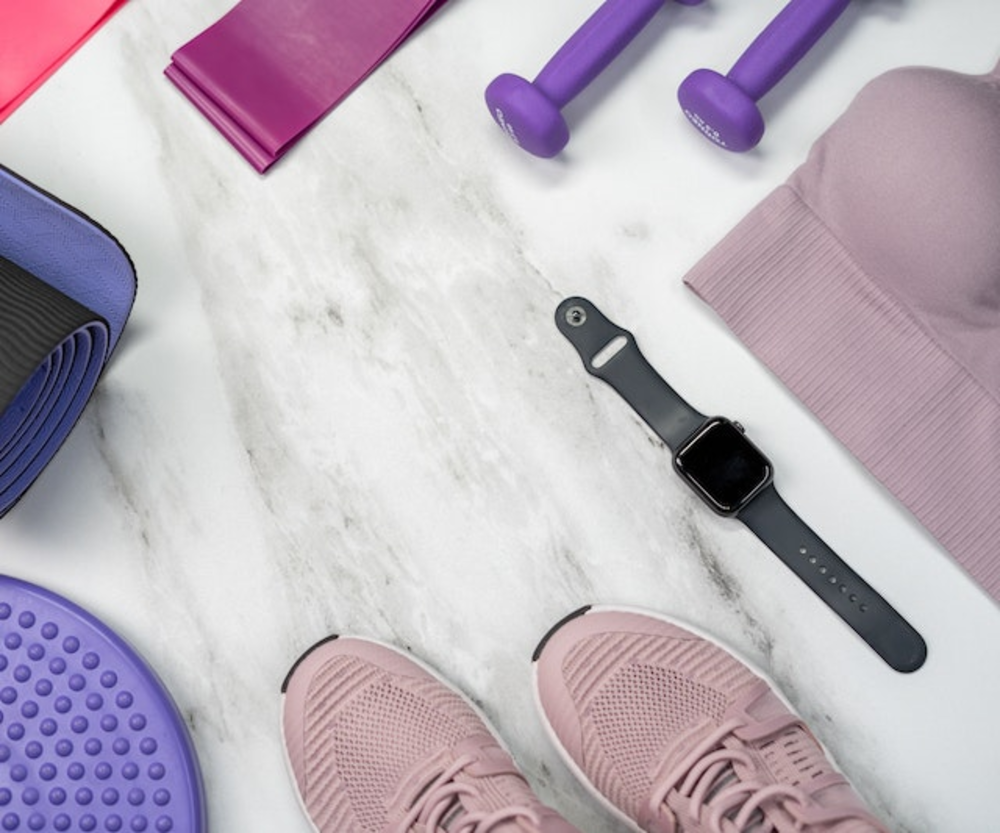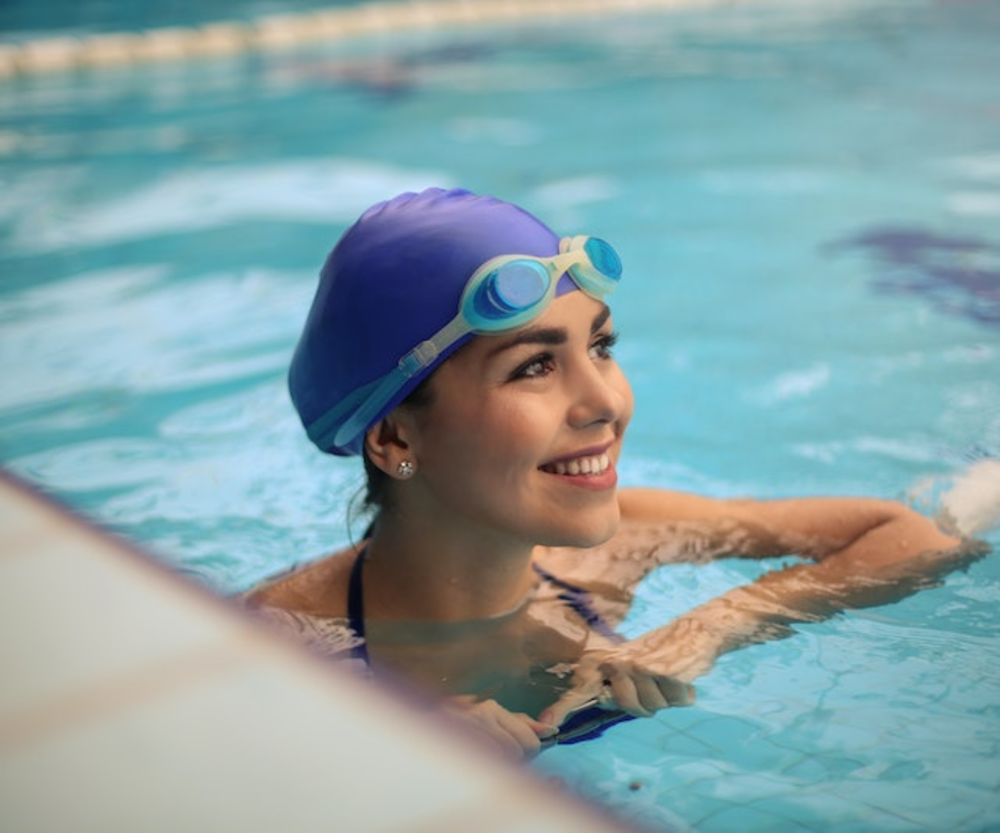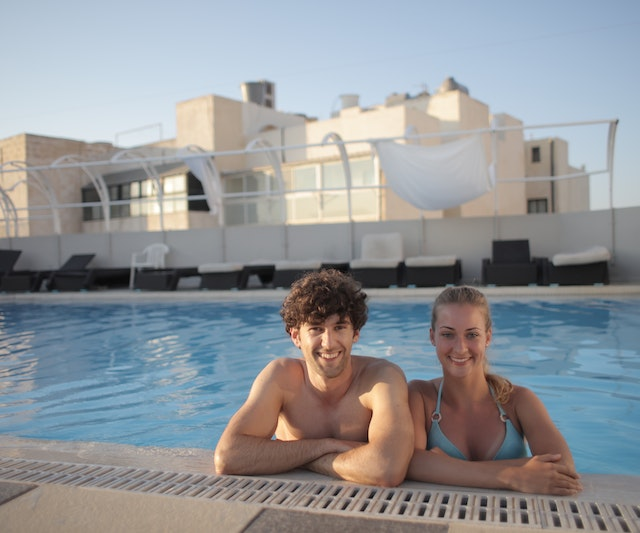Imagine this: The sun is high in the sky, the water in the pool is sparkling, and a group of eager faces is looking at you in anticipation.
The beat of the music pulsates through the air, and you, as the fitness expert, are ready to guide these aquatic adventurers through an exhilarating, full-body workout. Welcome to the vibrant world of a water aerobics instructor!
Becoming a water aerobics instructor is not just about teaching exercises in a pool. It’s about turning fitness into a fun, accessible, and refreshing experience.
It’s about being a part of a community of group fitness instructors who are passionate about helping people of all ages and abilities improve their health and well-being.
It’s about leadership and a commitment to lifelong learning. And the best part? You get to do all this while being immersed in water!
But how do you dive into this exciting career? What does it take to become a certified water aerobics instructor? let’s explore the journey of becoming a water aerobics instructor.
What Does a Water Aerobics Instructor Do?
Picture a maestro, poised and confident, ready to orchestrate a symphony of movement and energy. But instead of musicians, they’re leading a group of aqua enthusiasts. And instead of a concert hall, they’re in a pool. This maestro, my friend, is a water aerobics instructor!
The Maestro of Movement
The primary role of a water aerobics instructor is to lead water-based exercise classes.
They demonstrate various aquatic exercises and routines, monitor students for proper form, and provide modifications to accommodate different fitness levels.
These classes can range from low-impact workouts suitable for seniors or those rehabilitating from injuries to high-energy aquatic boot camps that provide a challenging cardio and strength workout.
A Guide and Guardian
Water aerobics instructor isn’t just a fitness leader; they’re also responsible for the safety and well-being of their students.
They must always be aware of the pool conditions, ensure that equipment is used correctly, and be prepared to respond to emergencies.
Knowledge of first aid and CPR is a must, ensuring a safe environment for all participants.
An Inspirer and Motivator
One of the most important roles of a water aerobics instructor is to motivate and inspire students.
They create a positive, energetic atmosphere that encourages participation and effort. They’re cheerleaders, champions, and sometimes, sympathetic ears for their students.
They help students set and reach their fitness goals, celebrate their progress, and encourage them when they’re feeling low.
A Life-Long Learner
In the ever-evolving fitness industry, a water aerobics instructor must be committed to continuous learning.
They stay updated with the latest research and trends in aquatic fitness, hone their skills through additional certifications and online courses, and strive to make their classes innovative and engaging.
A Skillful Entrepreneur
Many water aerobics instructors work as freelancers or run their own businesses.
They set their rates, manage their schedules, market their classes, and build relationships with clients and fitness centers.
Being savvy in business helps them carve out a successful career in the competitive fitness landscape.
The Requirements to Become a Water Aerobics Instructor
The path to becoming a water aerobics instructor is more than just a love for water and fitness. It’s a journey that combines the right mix of formal qualifications, physical conditioning, interpersonal skills, and commitment to ongoing learning. Let’s dive into the requirements in detail:
Formal Qualifications
The first step is to get an aquatic exercise certification.
Typically, this means earning a water aerobics instructor certification from a recognized fitness association.
These certification programs ensure you’re well-versed in exercise science, teaching methodologies, and safety procedures.
Remember, your certification is not just a piece of paper; it’s an assurance to your future students that you are equipped to guide them safely and effectively through their aquatic exercise journey.
Physical Conditioning
As a water aerobics instructor, you’re not only teaching but also performing the exercises along with your students.
This requires a good level of physical fitness, strength, and endurance. You should be comfortable in the water, and have the ability to demonstrate a variety of aquatic exercises.
Interpersonal Skills: Be a People Magnet
Being a great instructor isn’t just about what you teach; it’s also about how you connect with your students.
You’ll need excellent communication skills to effectively instruct and motivate your class.
A touch of charisma, empathy, and a generous dose of enthusiasm can make your classes more enjoyable and help build a loyal student base.
First Aid and CPR Certification: Safety First, Always!
A crucial requirement for all fitness professionals, including water aerobics instructors, is being certified in first aid and cardiopulmonary resuscitation (CPR).
This is essential for ensuring the safety of your students in the event of an emergency. Many certification bodies require proof of these qualifications before you can become a certified instructor.
Lifelong Learning: Stay Current
The fitness industry is constantly evolving, with new research and trends emerging all the time. As an instructor, it’s important to stay current.
This might mean attending workshops, taking additional courses, or earning advanced certifications.
Continual learning not only broadens your skills but also increases your credibility as a fitness professional.
Professional Liability Insurance
While not always a requirement, it’s a good idea to get personalized insurance that is customized to your business.
This provides protection in the unlikely event that a student gets injured during one of your classes and decides to sue.
Finding the Right Certification and Training

Let’s talk about the roadmap to becoming a certified water aerobics instructor.
Water Aerobics Certification
You’ll find that there are numerous organizations offering water aerobics and aquatic fitness instructor certification, each with its own unique curriculum and requirements.
Some notable ones include the Aquatic Exercise Association (AEA), the American Council on Exercise (ACE), and the American Sports & Fitness Association (AFPA).
Look for a certification that is widely recognized in the fitness industry and provides comprehensive training in the following areas:
- Anatomy and physiology, with a specific focus on how the body responds to aquatic exercise
- Safe and effective exercise techniques for different fitness levels and populations
- Class design and choreography, cueing, and communication skills
- Risk management and safety procedures, including CPR and first aid certification
Choosing the right water aerobics certification might feel overwhelming, but remember, it’s all about finding one that aligns with your career goals and learning style.
Making a Splash with Specialty Certifications
While a general water aerobics certification is a great start, you might want to consider adding specialty certifications to your professional training arsenal. These allow you to offer unique classes and cater to specific populations.
For instance, you could earn a certification for teaching aqua yoga, or become a certified group fitness instructor for individuals with arthritis.
You could even become certified to teach aqua cycling classes! The more specialized your skills, the more you can diversify your class offerings and stand out in the fitness industry.
Aqua Fitness Course: A Deep Dive into Knowledge
Beyond certifications, there are an array of aquatic fitness courses you can take to further enrich your knowledge and improve your teaching skills.
Some of the aquatic exercise course delve deeper into aquatic exercise science, while others focus on specific aspects like improving balance and coordination, or training for endurance sports.
Blending Practical and Theoretical Training
A good certification or training program should strike a balance between theory and practice.
In addition to studying the science behind aquatic exercise, you’ll need plenty of time in the pool to master the techniques, practice teaching, and get comfortable handling equipment.
Developing a Class and Lesson Plans
Crafting the perfect water aerobics class and lesson plan is like conducting a symphony – it requires harmony, variation, crescendo, and a beautiful finale. Here are some detailed steps to help you choreograph an aquatic masterpiece:
Understanding Your Swimmers
Every class you teach will be different because every group of students you meet will have unique needs and capabilities.
Consider their age, fitness levels, and health conditions. A class full of energetic twenty-somethings will require a different approach than a class designed for active seniors.
Tailor your program to match the unique vibe and rhythm of each group.
Building the Class Structure
A practical water aerobics class should flow seamlessly from one phase to the next. Here’s a typical class structure:
- Warm-Up: Start the class with gentle movements to wake up the muscles and prepare the body for exercise. This also serves to acclimatize participants to the water temperature.
- Cardio Workout: This is the heart-pumping section of the class, where participants increase their heart rate and burn calories. Aqua jogging, water jumping jacks, and flutter kicks are all great cardio exercises.
- Strength Training: Use water resistance and equipment like water weights or resistance bands to help tone and strengthen muscles.
- Balance and Flexibility: Include exercises that enhance balance and flexibility. Water yoga and tai chi moves can be adapted for this part of the workout.
- Cool-Down and Stretch: Finally, wind down the class with slow, gentle movements and stretches to relax the muscles and prevent post-exercise stiffness.
Adding Variety to Your Program
Keep your classes fresh and exciting by introducing a range of exercises and activities. Use different props like noodles, kickboards, and floating dumbbells.
Experiment with new moves and patterns. Throw in a fun workout challenge or relay race once in a while. A diverse program keeps participants engaged and looking forward to the next class.
Communicating Effectively
A key part of your lesson plan is deciding how to deliver instructions. Will you use a microphone, or will your voice carry over the water? Are your instructions clear and easy to follow?
Do you demonstrate each exercise before the participants try it? Effective communication ensures your class runs smoothly and safely.
Keeping Safety Front and Center
In all your lesson plans, safety should always be a top priority. Be aware of the pool’s depth, temperature, and any potential hazards.
Have a plan in place for emergencies, and always keep a first aid kit close at hand.
What Equipment Do You Need?

So, you’ve got your water aerobics certifications, you’ve honed your skills, and you’re ready to dive in and teach your first water aerobics class. But wait! You’re going to need some equipment to get started. Here’s the lowdown on the essentials and some optional extras that can add a splash of fun to your classes:
The Essentials:
- Aquatic Exercise Equipment: This includes foam dumbbells, ankle and wrist weights, and resistance bands. These tools add an extra challenge to workouts by providing resistance against the water, helping to tone and strengthen muscles.
- Flotation Devices: These can be used for support during specific exercises. They come in different forms like noodles, belts, or boards. They’re especially handy for beginners or those with mobility issues.
- Water Shoes: While not a necessity, water shoes can provide extra grip on the pool floor, enhancing safety and balance during workouts.
- Microphone and Speaker: To make sure everyone can hear your instructions over the sound of splashing water, you may want to invest in a waterproof microphone and speaker system.
The Extras:
- Aqua Gloves: These webbed gloves can add more resistance to arm movements, intensifying the workout.
- Aqua Steps: They’re like steppers for the pool, offering a whole new range of exercise possibilities. Great for those seeking a high-intensity workout.
- Kickboards: While often used in swim training, kickboards can be repurposed for a range of water aerobics exercises, adding variety to your workouts.
- Pool Noodles: Besides being flotation devices, pool noodles can be used for resistance exercises, balance training, and even aquatic games.
- Music System: Let’s not forget the motivating music! Having a waterproof music system can turn your water aerobics classes into fun, energizing sessions.
Finding Work at Gyms, Community Centers, and Resorts

Now, you’re probably wondering: where do you find work as a water aerobics instructor? The good news is, opportunities abound in various settings. Here are some of the most promising places to start your aquatic fitness career.
Flex Your Muscles at Fitness Gyms
Fitness gyms with swimming pools are typically on the lookout for certified water aerobics instructors.
They have a ready pool of members who are likely interested in diversifying their fitness regimen.
What’s more, these gyms often have the resources to market your classes, providing a built-in audience.
In addition to group classes, many water aerobics instructors also work as personal trainers, offering one-on-one sessions to clients who prefer a more personalized workout experience.
In gyms, you could have the chance to work with a diverse range of clients, from young adults to seniors, each with unique fitness goals.
It’s a great place to hone your skills, adapt to different fitness levels, and build your reputation.
Dive into Community Centers
Community centers often serve as the heart of local fitness. They offer a variety of activities to cater to their members’ interests and are usually more than willing to introduce water aerobics classes.
What’s great about community centers is their close-knit nature, allowing you to become a familiar face and develop lasting relationships with regular participants.
Splash Out at Resorts and Cruise Ships
Fancy adding a touch of glamour to your career? Luxury resorts, hotels, and cruise ships often provide aquatic fitness classes to their guests.
Working in such settings could mean getting to enjoy a beautiful environment, meeting people from all walks of life, and even traveling as part of your job.
Making Waves with Private Classes
If you’re an entrepreneur at heart, consider offering private water aerobics classes. This could be one-on-one sessions or small groups, and you could offer them at private pools or community pools that rent out space.
Private classes allow you to charge premium rates and offer customized lessons based on individual needs.
Soak Up Opportunities with Online Platforms
In this digital age, why not take advantage of online platforms?
While water aerobics is typically an in-person activity, you could offer virtual classes for those who have access to a pool but can’t make it to scheduled classes. It’s a great way to reach a wider audience and offer flexibility.
Conclusion
Becoming a water aerobics instructor is a fulfilling journey, leading you to a career that’s both rewarding and exciting.
With the right qualifications, preparation, and passion, you can dive into the world of aquatic fitness, bringing health, joy, and inspiration to others.
This profession is a testament to the synergy of fitness, water, and people. It’s about making a difference, one splash at a time.
So, if the thrill of the aquatic rhythm calls out to you, don’t hesitate. Jump in, the world of water aerobics is waiting for you!
FAQ
Below we answer some of the frequently asked questions.
What makes a good aqua instructor?
A good aqua instructor is well-certified, knowledgeable about various aquatic exercises, and able to cater to different fitness levels. They are also enthusiastic, engaging, and safety-conscious, and have excellent communication and leadership skills.
How long should a water aerobics class be?
A typical water aerobics class lasts between 45 minutes to an hour. This usually includes a warm-up, the main exercise set, and a cool-down phase.
Who can participate in water aerobics?
Almost anyone can participate in water aerobics. It’s suitable for people of all ages, fitness levels, and swimming abilities. It’s especially beneficial for seniors, pregnant women, those with joint issues, or anyone looking for a low-impact but effective workout.
How do you teach aqua aerobics?
To teach aqua aerobics, you start by planning a session including warm-up, main workout, and cool-down stages. You demonstrate each exercise, provide modifications, monitor participants for correct form, ensure safety, and keep the class engaged and motivated.




